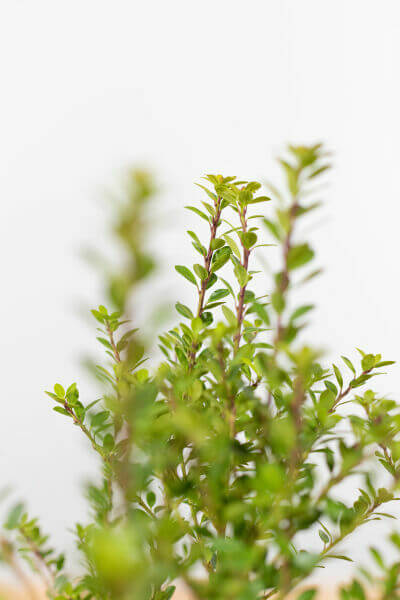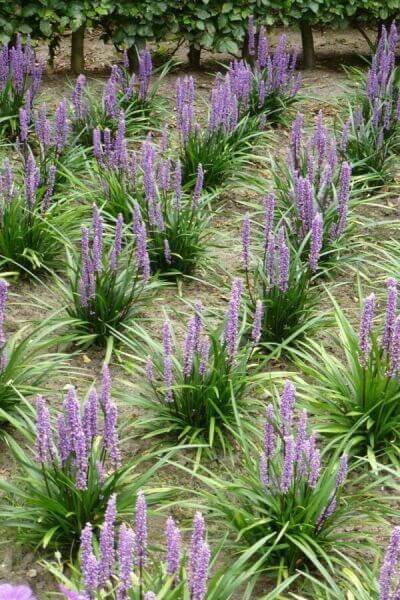Best Hedging Plants For Spring Flowers
Boost your garden's allure with lush hedge varieties such as Yew (Taxus), Thuja, Laurel, Photinia, and Bamboo, commemorated for their structural stability and ecological advantages.
Yew and Thuja supply evergreen coverage and winter season resilience, while Laurel provides quick growth and broad, fragrant leaves.
Photinia includes seasonal beauty with its vibrant red foliage, and Bamboo provides a low-maintenance, peaceful atmosphere.
These hedges improve air quality, minimize noise, and produce tranquil, personal areas.
Proper planting, spacing, and upkeep ensure energetic development and environmental consistency.
Check out how these lush varieties can raise your garden's appeal and wellness.
Key Takeaways
Transform Your Garden With Lush Hedge Ranges
- Select Yew for its thick, evergreen development and unparalleled durability.
- Go with Laurel for its quick development and broad leaves, ensuring quick privacy.
- Select Photinia for its lively seasonal foliage, which turns a striking dark red.
- Utilize Bamboo for a low-maintenance, winter-hardy hedge with aesthetic appeal.
- Area plants 2-3 per meter and prune frequently for optimum growth and health.
Popular Hedge Plants
When transforming a garden with lush hedge varieties, it's vital to consider popular hedge plants such as Yew, Thuja, Laurel, and Photinia due to their distinct attributes and advantages.
Yew (Taxus) is extremely respected for its durability and thick, green development, making it a prime option for sustaining landscapes.
Thuja is kept in mind for its evergreen foliage and robust winter season durability.
Photinia adds seasonal vibrancy with red leaves that darken in time, producing dynamic visual appeal.
Laurel provides fast growth and fragrant, broad leaves, ideal for quick personal privacy.
In Addition, Bamboo is an excellent choice for ambiance, offering a low-maintenance, winter-hardy alternative that boosts the garden's visual with its sophisticated, swaying walking sticks.
These selections cater to a range of horticultural requirements and choices.
Advantages of Garden Hedges
Garden hedges offer a wide range of benefits, making them an important addition to any landscape. These natural barriers are economical to execute and provide significant wind defense, improving air circulation and adding to noise reduction. The thick foliage of hedges like Thuja and Beech guarantees privacy by blocking exposure, creating a tranquil and secluded environment.
Hedges also play a crucial function in microclimate regulation, supplying a stable environment that fosters plant development and minimizes temperature level fluctuations. Their detailed leaf structures filter contaminants, enhancing air quality and contributing to a much healthier garden ecosystem.
Additionally, hedges master sound reduction, soaking up and deflecting sound waves to lower ambient sound levels. This dual performance of supplying both visual and acoustic personal privacy enhances the total tranquility and visual appeal of any garden.
Planting and Upkeep Tips
For a successful hedge, meticulous preparation of the planting location is crucial. Make sure the soil has proper pH and drainage to support strong root advancement.
Space the plants appropriately for the selected types. Water the hedge frequently throughout its preliminary growth phase, adjusting as required with seasonal modifications.
Implement a methodical bug control and disease prevention technique, utilizing chemical or organic treatments when required. Frequently check for aphids, mites, and fungal infections.
Apply mulch to retain moisture and reduce weeds. Seasonal pruning promotes thick development and air blood circulation, essential for plant health.
Following these guidelines will help you cultivate a dynamic, well-kept hedge that boosts the appeal of your garden.
Spacing and Cutting Standards
Spacing and Trimming Guidelines
Proper spacing and trimming are essential for cultivating healthy, aesthetically appealing hedges. Sufficient spacing guarantees each plant gets enough nutrients, light, and air flow.
Follow these standards for ideal hedge upkeep:
- Spacing: Position hedge plants 2-3 plants per meter to motivate robust growth.
- Pruning Methods: Routine pruning is vital for maintaining desired hedge height and shape. Trim new growth in summer and cut down older wood throughout winter season.
- Seasonal Care: Change trimming methods and schedules according to seasonal requirements to ensure plant health.
- Hedge Height: Routinely display and trim to maintain the desired hedge height and accomplish uniform visual appeals.
Sticking to these steps will ensure your hedge thrives, boosting both the appeal and performance of your garden.
Selecting the Right Hedge
Selecting the Right Hedge
Choosing the appropriate hedge includes assessing elements such as mature height, foliage density, and ecological durability. Successful hedge plant selection needs comprehending each species' growth characteristics and site-specific adaptability.
For instance, Yew (Taxus) offers excellent durability and dense development, while Thuja is noteworthy for its winter season strength. In addition, considering upkeep requirements is important; fast-growing species like Laurel or Privet need regular cutting, whereas low-maintenance options like Bamboo or Ivy may be more suitable for those looking for minimal maintenance.
Environmental aspects such as soil type, light accessibility, and wetness conditions must also direct the choice process. This mindful approach makes sure the chosen hedges will prosper, providing both visual and functional benefits to the garden landscape.
Shipment and Planting Advice
To ensure your hedge plants grow, they ought to be provided by specialized couriers and planted without delay upon arrival.
Follow these essential actions for successful planting:
- Soil Preparation: Enhance the soil with raw material to enhance drain and nutrient content.
- Planting Depth: Produce a trench two times the width and equivalent to the depth of the root ball.
- Watering Techniques: Water thoroughly after planting, keeping the soil consistently wet but not saturated.
- Mulching: Apply a layer of mulch to keep wetness and reduce weeds.
Customer Support and Service
Given the important function of prompt assistance in horticultural pursuits, our customer assistance team is offered six days a week through telephone, email, and social media to provide expert advice and quickly address any issues. Their devotion to fast action times ensures consumer fulfillment by solving inquiries associated with plant health, optimal planting techniques, and upkeep schedules.

This thorough assistance system, strengthened by a stellar 9.3/ 10 consumer score, highlights our dedication to enhancing the gardening experience for every single customer.
Frequently Asked Concerns
For How Long Does It Consider Hedge Plants to Establish?
Hedge plants generally need one to three years to end up being fully developed, with the exact period differing by types and growing conditions.
Effective care throughout this critical duration is essential for robust growth. Constant watering, vigilant weed control, and proper fertilizer application are pivotal in promoting strong root development.
For instance, fast-growing species like Laurel may develop more rapidly, while slower-growing varieties such as Yew might take longer. Thorough maintenance speeds up the facility process, leading to dense and healthy hedges.
What Are the Finest Hedge Plants for Privacy?
The question of the best hedge plants for personal privacy includes evaluating evergreen and deciduous choices.
Evergreen hedges like Thuja, Laurel, and Cypress supply year-round protection, ensuring continuous personal privacy.
On the other hand, deciduous hedges such as Beech use seasonal privacy, shedding leaves in chillier months.
Key upkeep pointers for personal privacy hedges consist of regular trimming, fertilizing in spring, and proper spacing-- normally 2 to 3 plants per meter.
Furthermore, constant watering and persistent weed elimination are crucial for promoting healthy, dense development.
Can Hedge Plants Draw In Wildlife to My Garden?
Yes, hedge plants can draw in wildlife to your garden by supplying essential benefits like shelter, food, and nesting sites, thereby enhancing local biodiversity. Yew, holly, and laurel are outstanding for attracting birds, while ivy supports a variety of pests.
Nevertheless, it is very important to keep in mind that there are some disadvantages, such as increased maintenance to manage bugs and routine upkeep. Thoroughly picking and preserving hedge varieties can assist balance these disadvantages and benefits, eventually promoting a sustainable and lively environment in your garden.
Are There Any Flowering Hedge Plants Available?
Yes, there are flowering hedge plants readily available that can improve the beauty of your garden.
For instance, Elaeagnus, also called Olive Willow, produces fragrant white flowers in the fall, adding a touch of elegance.
Photinia, another popular option, showcases vibrant red leaves that grow into a rich green, developing a dynamic visual effect throughout the seasons.
To guarantee these plants thrive, it's necessary to practice proper pruning strategies and seasonal maintenance, such as cutting new growth in the summer season and cutting down in the winter season.
These steps will assist maintain the health and aesthetic appeal of your blooming hedges.
How Do I Prevent Insects in My Hedge Plants?
To avoid pests in hedge plants, utilize natural bug control methods and preserve correct hedge care. Introduce useful pests like ladybugs, which take advantage of damaging pests, to create a well balanced environment.
Regularly inspect your hedges for signs of problem and promptly eliminate any Additional hints afflicted parts to prevent the spread. Ensure the health of your hedges by applying balanced fertilizers and supplying appropriate water.
Utilize mulching to retain soil moisture and appropriate spacing to minimize plant tension and promote robust development. These practices jointly assist in minimizing pest concerns and maintaining a healthy hedge.
Conclusion
In essence, choosing the right hedge varieties such as Yew, Thuja, and Laurel can change any garden into a tranquil haven. These plants provide year-round greenery, enhance visual appeal, and deal useful advantages like sound reduction and wind security.
Proper planting techniques, accurate spacing, constant watering, and seasonal cutting are crucial for ideal growth.
Trusted shipment services and skilled client support ensure a smooth experience from purchase to planting, making it easier than ever to raise your outside space.
Garden hedges offer a multitude of advantages, making them a valuable addition to any landscape. These natural barriers are affordable to carry out and offer substantial wind security, enhancing air blood circulation and contributing to sound reduction. The thick foliage of hedges like Thuja and Beech ensures personal privacy by obstructing presence, creating a remote and peaceful environment.

Pruning Techniques: Regular pruning is important for maintaining desired hedge height and shape. Trim brand-new development in summer season and cut back older wood throughout winter.
Comments on “Hedging Plants For Formal Hedges”